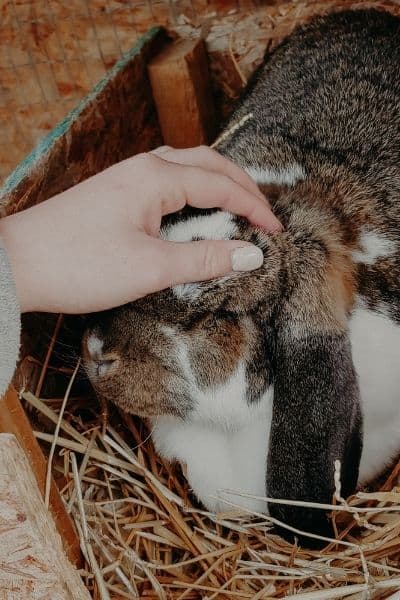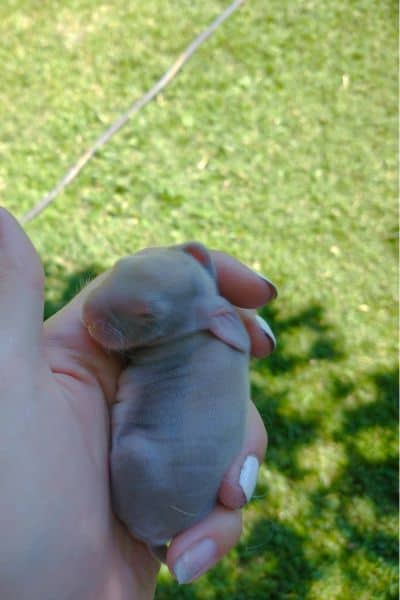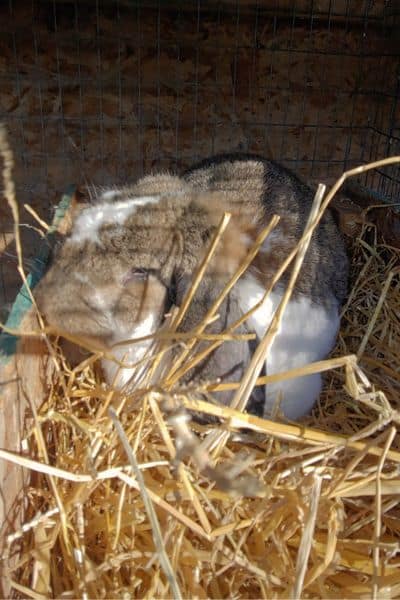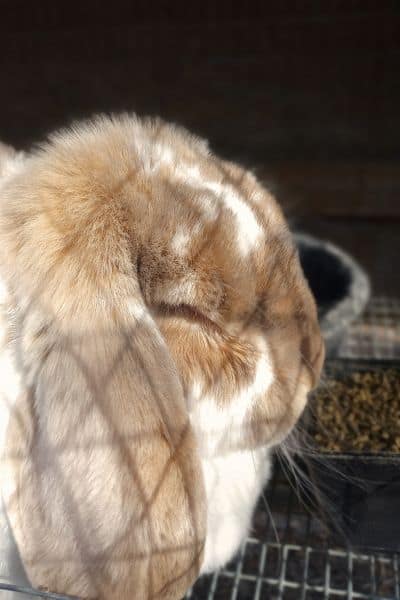Beginner’s Guide To Fostering Kits To A New Mother
Fostering baby rabbits to a different mother is not as scary as it sounds. But it can be tricky if you don’t have another mother rabbit with a litter the same days of age as the kit that needs to be fostered.
I hope you never have to deal with fostering kits but if you do it is good to have an idea of how to handle the situation.
If you get yourself too mentally stressed out about what to do with a rabbit kit just remember this. Most often they are not going to make it in their current situation if you do nothing. If they don’t get fed or the mother rabbit is not doing her job the baby rabbits won’t make it anyway. They are no worse off if you do something and it didn’t help so it’s worth the try.
What Is Fostering Kits?
This is when you have one doe raise kit from another litter. It could be just one kit or it could be a whole litter. However, it can be a little tricky because you have to get the doe to think that these kits are hers.
She’s not going to just take baby rabbits in out of the goodness of her heart. I will get into tips for fostering one domestic rabbit litter to another in just a sec.
Top Reasons To Foster Kits
There can be so many reasons why you might need to foster kits to another mom.
1. Well, let’s just say the mother rabbit was not super nice to her babies. If she damaged her baby rabbits on purpose then definitely find a foster mom.
2. The more common reason is that they do can’t feed all of the kits she has. — She may not have produced enough milk. Her litter could have been abnormally large. Or maybe she chose not to feed the litter all together. It is sad but can happen.
If you have fostered before and are a more experienced rabbit raiser you can foster baby bunnies to another mother that has a smaller litter so they can simply grow better instead of staying with the larger litter and growing much slower.
Here is an example I had just this past summer.
Millie and Bailey had litters 24hrs apart and Millie was doing fine with her litter of 6 but Bailey only had 3 kits of her own.
So I took one kit from millies litter that looked very different from Bailey’s kits and added it to the nest. Bringing Bailies litter up to 4 kits and Millie’s down to 5. It worked out perfectly because the larger litter had more food to go around and Bailey had more than enough milk supply for her own litter. So it made for more well-fed baby rabbits.
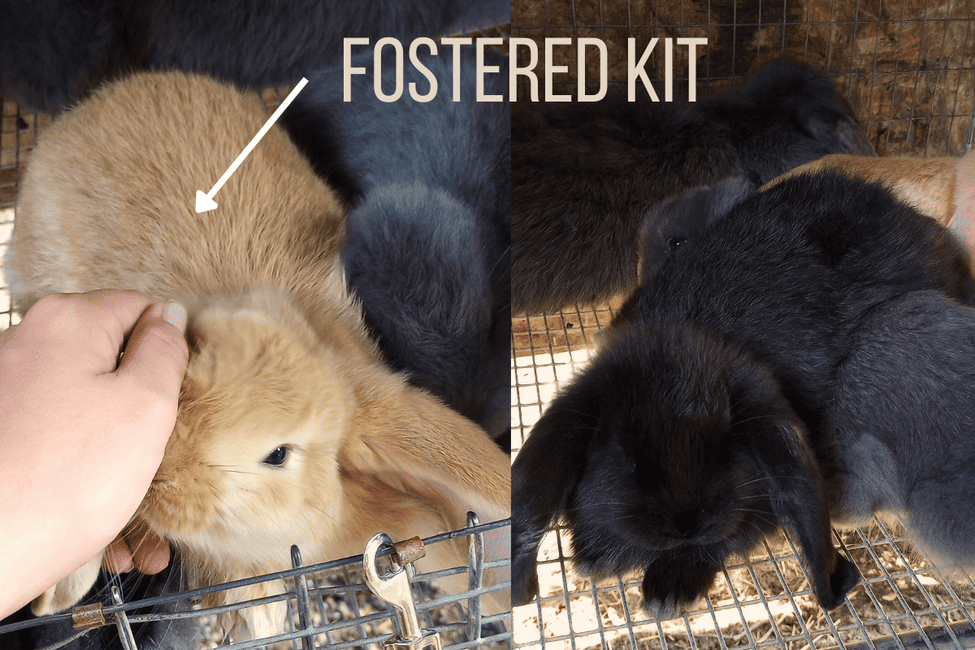
If you are a more experienced rabbit raiser this is definitely something you can implement in your rabbitry for better results. Just make sure you can tell which kits were moved into the new litter ESPECIALLY if you are selling them or providing pedigrees.
Tips To Tell Kits Appart
If you are raising rabbits for meat it really doesn’t matter if you can keep the kits apart. BUT if you are providing pedigrees, raising show rabbits, or you are raising rabbits that you are going to sell you need to be able to tell which ones were added to the foster litter.
My favorite thing to do is to choose kits that look very different from the foster mother’s litter. Bailey’s litter was all blue and black babies so I knew I could add a fawn kit (tan) to the litter and not have to keep touching up the marker every few days. — But I know this is not possible all the time and if you raise a breed with a lot (or all) the same color this isn’t possible. So you have to mark your rabbits.

- Choose THE SAME ear that you will continue to mark for every single rabbit you need to mark in all of your litters. — Since rabbits are tattooed in THEIR left ear this is the ear that I make all of my young rabbit ear markings in as well.
- You can use a sharpie or I have heard of some people use nail polish. I do think that the nail polish would last longer but I am hesitant to use it in case the kits ingest the nail polish and it makes them sick.
Free Farm Goal Planner!!!
➡️Get my proven system for choosing your farm goals so you don’t get burnt out.
Double Litter Breeding Strategy
This is something I started doing once my rabbitry got a little bigger and that was to breed two does at the same time so I would have a foster mother available. The trick is you need to get the breedings to happen within days of each other because you can’t foster kits that are too far apart in age or the older kits will just out-compete the younger kits for food.
Don’t forget that these are animals. They don’t share or “do the right thing”.
This has been a great choice for me and my rabbitry but make sure you have a plan of what to do with these kits. Don’t just breed for breeding’s sake. Make sure you can sell them or you plan to harvest the meat if you are raising them for food.
When Not To Foster
The only time you should not try to foster babies is if they put the foster momma’s babies at risk. If the mother died for no explainable reason or if the babies seem sick.
Check the babies over for wounds or discharge from the nose or mouth as well as diarrhea before giving them to the mom.
If The Kits Are Too Far Apart in Age
This is where you may not be able to foster the kits. If the host litter is several days or much larger than the kits you will be adding. Its not likely that the smaller kits will be able to compete for food. On top of that if the other kits are stronger they could cause damage to the other kits. You can always try if you know them staying with the current litter is not going to save them. But done
Tips To Spot Under-Fed Baby Bunnies
The main reason you will need to foster baby rabbits to another litter is because they are not getting fed by their current mother. So how do you tell which ones need to be moved?
Until the litter is 24hrs old you really can’t make a good judgment as to whether or not the doe is feeding the kits. But it is a good idea to look each kit over to see if you can spot which ones have been fed.
How To Look Them Over
If it’s not below 60 degrees (in the barn or outside in rabbit hutches) I often will take each kit out of the nest the mother has made and put them in a pile in another spot in the nest so I know I have looked each kit over well. — MAKE SURE to put them back in the original nest after you have looked each kit over. You may have to take the nest box out of the does cage so you can look at the litter without her getting agitated or jumping in on the kits as you look them over.
What You Are Looking For
You are looking for flat bellies and dehydration lines.
The little dehydration lines over their back are not the same as skin folds. They are almost within the skin not folds. Look at the image below to see what I mean.

Often times you need to make the choice about what to do within 48hrs for the best chance of survival. If the kits get too weak they are not likely to survive even if they do get fed from another doe.
These kits below are day old kits that have been fed a little but not extremely well. It can take a doe longer to get enough milk in.
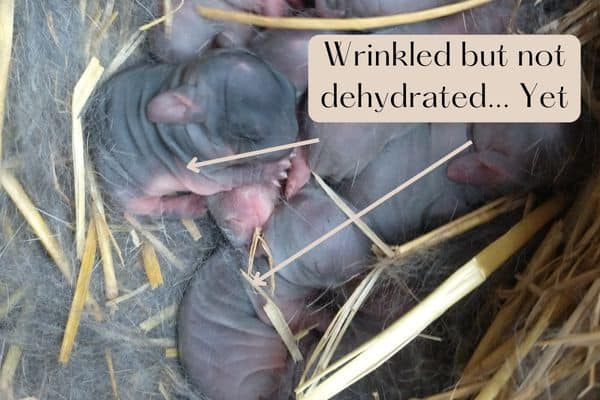
The image below is an overfed baby. It’s not a bad thing but if you have a litter where all of the kits are getting fed this well. You know you can safely add another kit or two and the doe could feed them well. It may take a day or two for everyone to adjust but it should work out fine.


If you want to try and get the doe to feed her litter first or you can try to bottle feed the kits, but be prepared that is a lot of work and is not always successful. You can read more on how to help kits nurse and get fed here.
Choosing The Right Foster Mother
The very first thing to note is unless you have a doe with babies VERY close in age it’s not going to work. If the foster rabbit’s babies are even a little bit smaller than the host litter then they will have a hard time fighting to get food. This happens even in the same litter when one or two kits get stronger than the rest and they don’t share the food.
It’s not a sweet calm ordeal when mamma jumps in the box. It’s whoever comes first gets the food.
If a doe is not already nursing and raising babies of her own she can’t foster babies. It’s not like a cow or goat you can milk for quite some time before she dries up. Most does lose milk after 3-5 weeks after giving birth. By the time the host doe’s litter is three weeks of age, she is already starting to get her babies to stop nursing. It’s not likely that you would be able to trigger her to take on another litter that is younger than her original litter.
If the host doe already has a larger litter and if adding more will put the host litter in danger of not getting fed I don’t add more kits to the litter. In this case, I hand-feed the kits I can and hope for the best.
Get help and find motivation as we build our intentional backyard farm together.
Will Rabbits Foster Babies? – Tips You Need To Know
Steps to foster kits to a new litter.
- Choose your method of telling the kits appert. — Different colors, or markings in the ear with a sharpie or nail polish.
- Then put the new babies underneath the foster mother’s babies. This will help cover up the smell of the new babies and make them smell like her own.
- Make a note of the kits you added to the litter in your calendar or in your rabbitry notebook so you don’t forget.
- Check the kits the next day to see if they are getting fed in the new litter.
If your whole litter doesn’t survive for one reason or another and the seasonal temperatures are warm enough, I would let the doe rest for about a month and then breed her again. If she didn’t know what she was doing you need her to figure it out. And often time first time does don’t know what to do with their litter. Rebreeding them will help.
Raising rabbits isn’t easy. You have to do your best and know that is enough.

